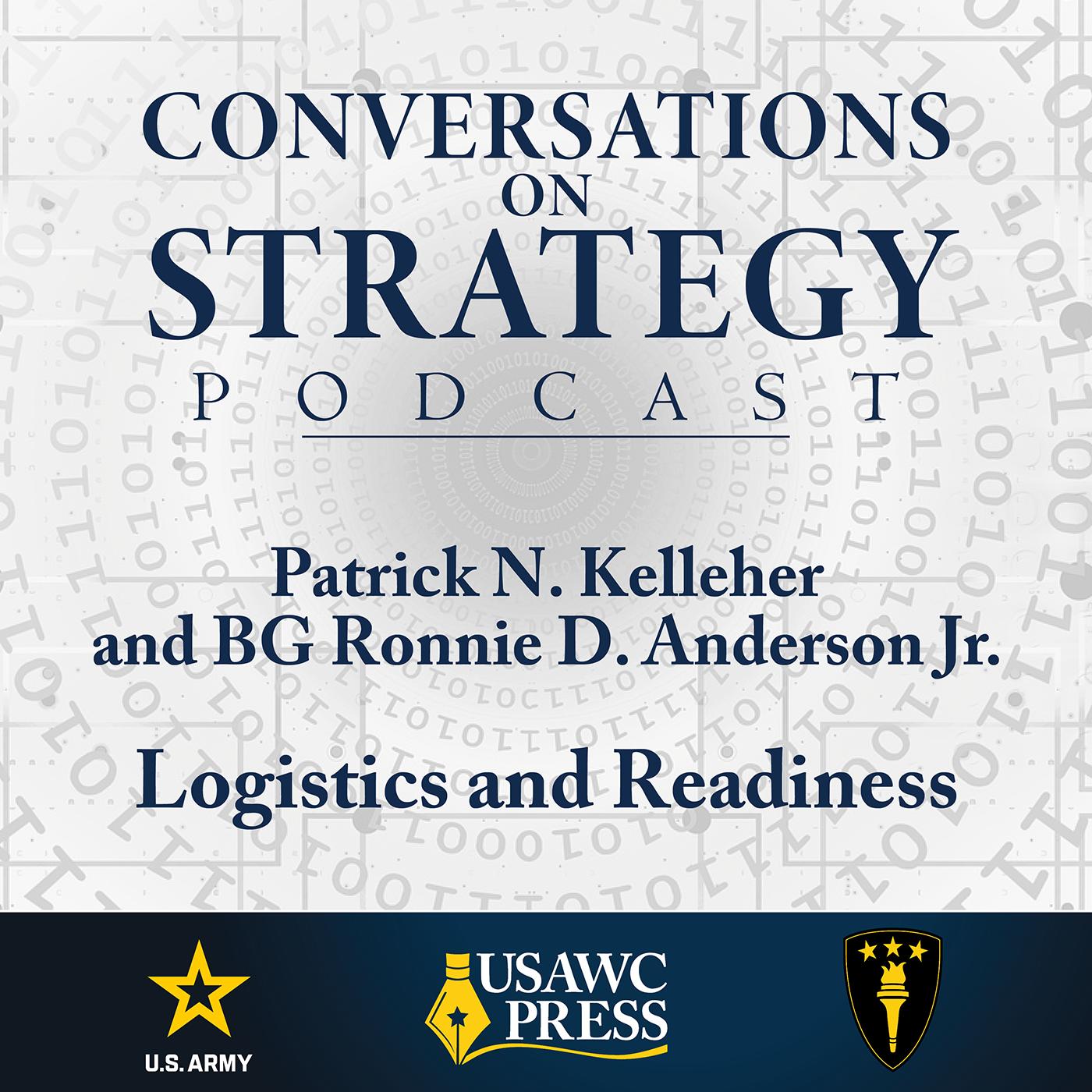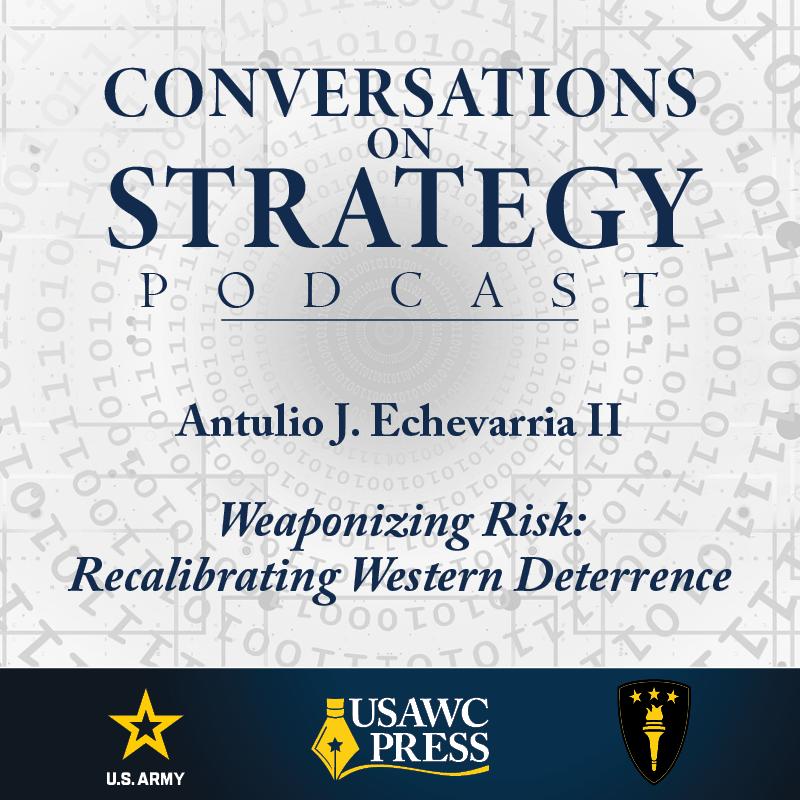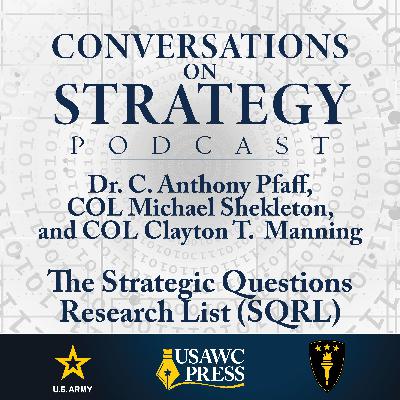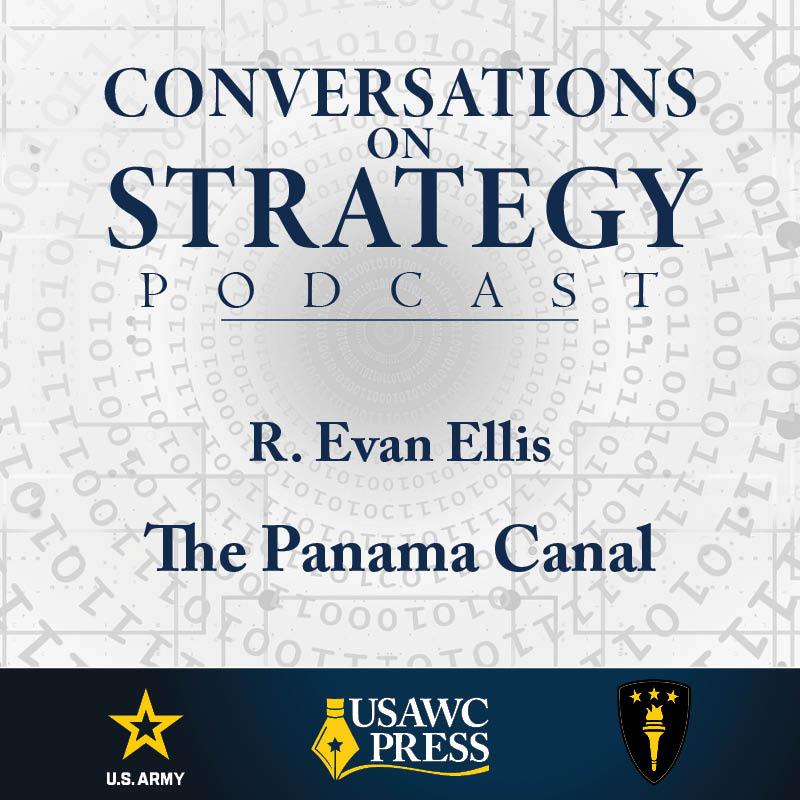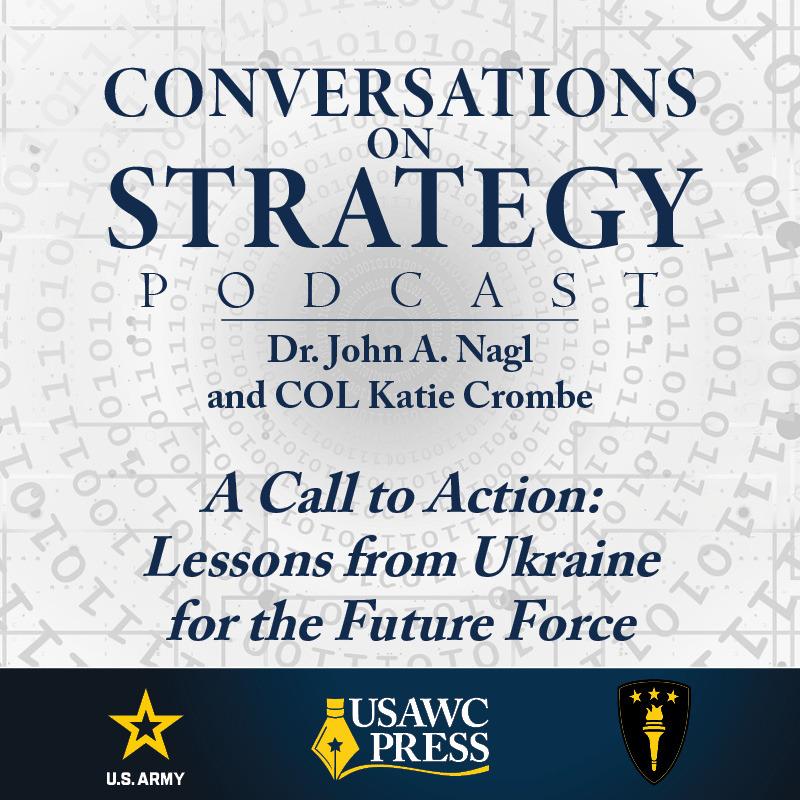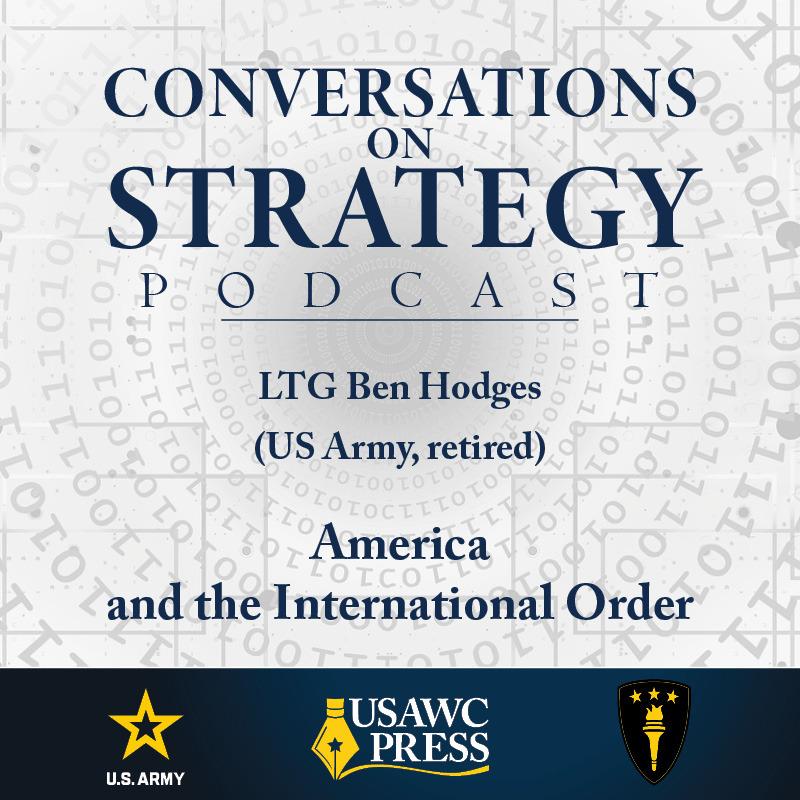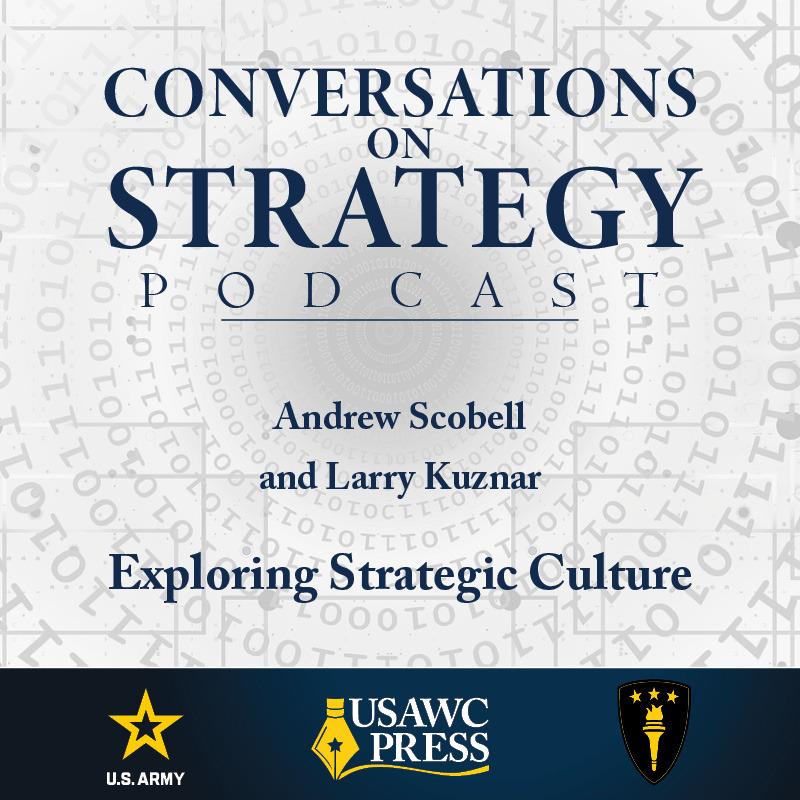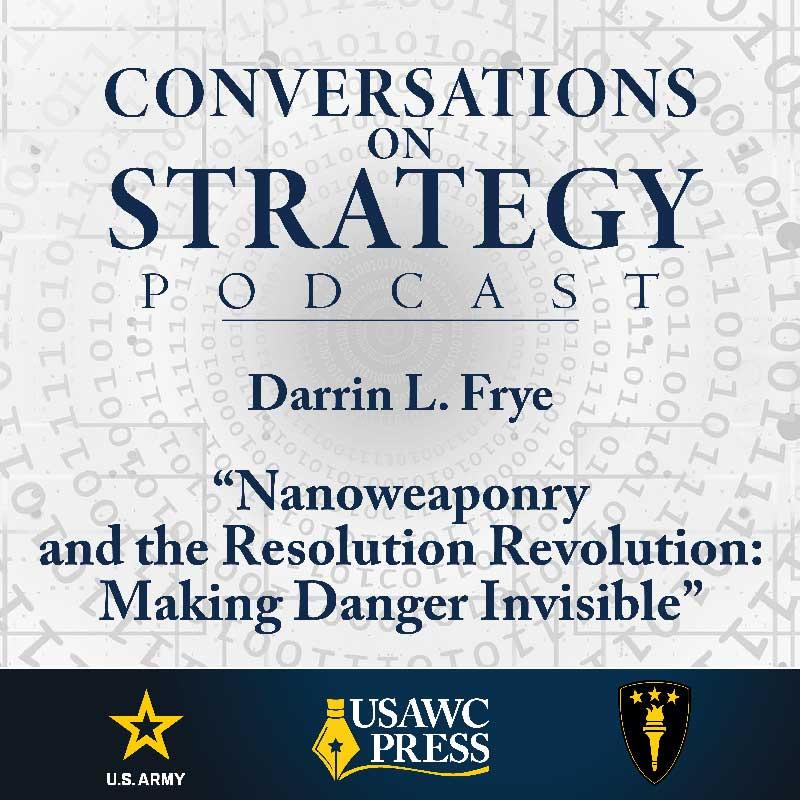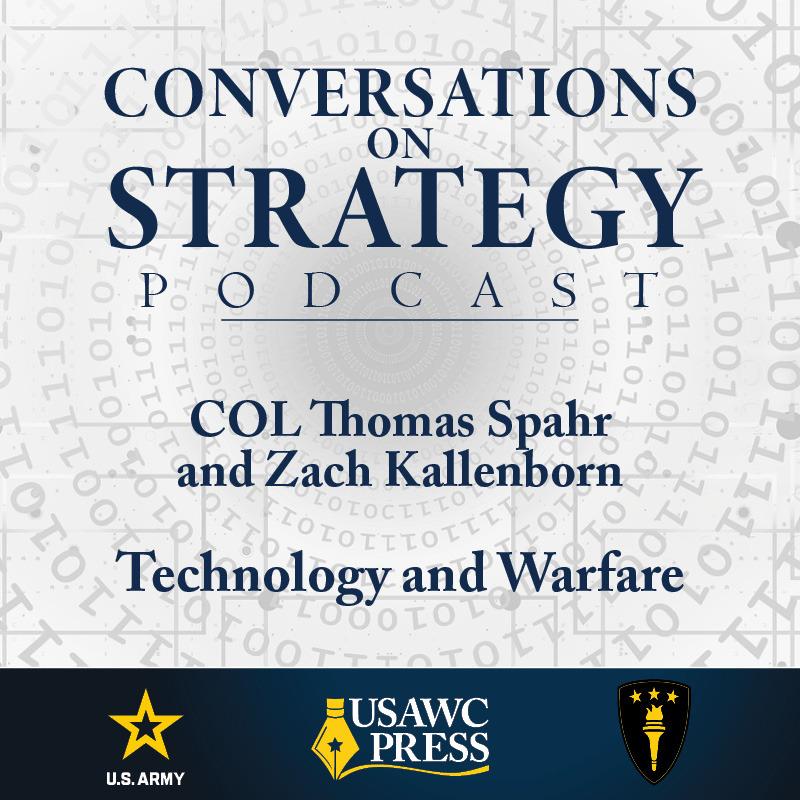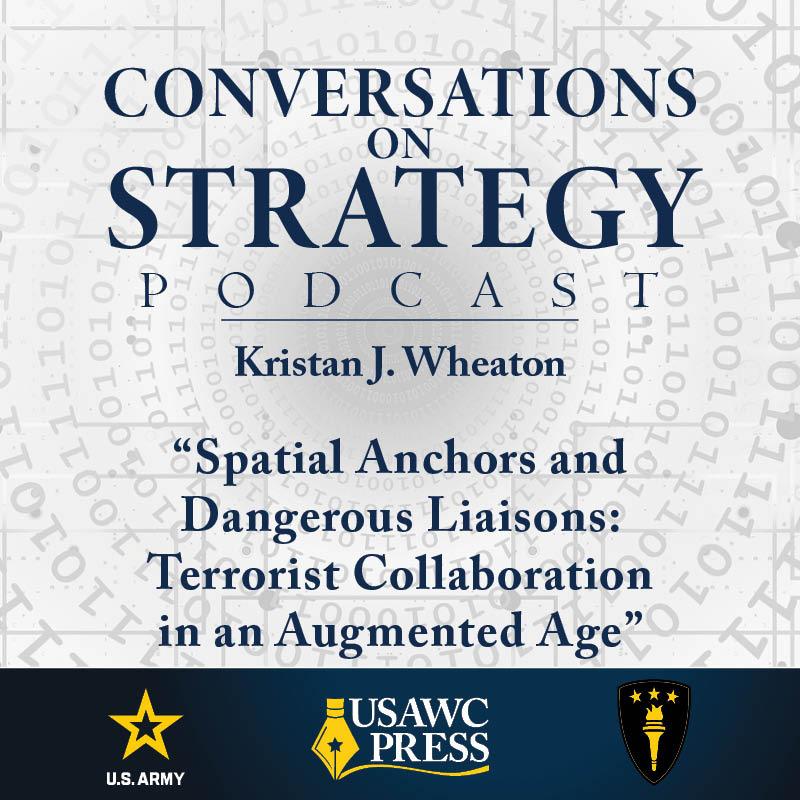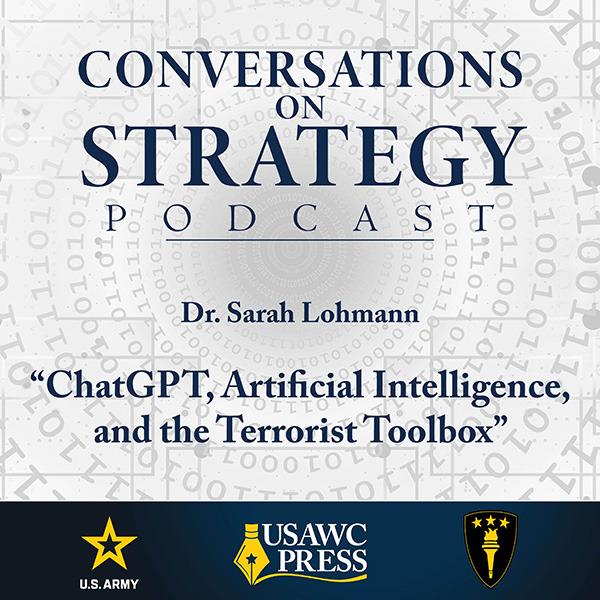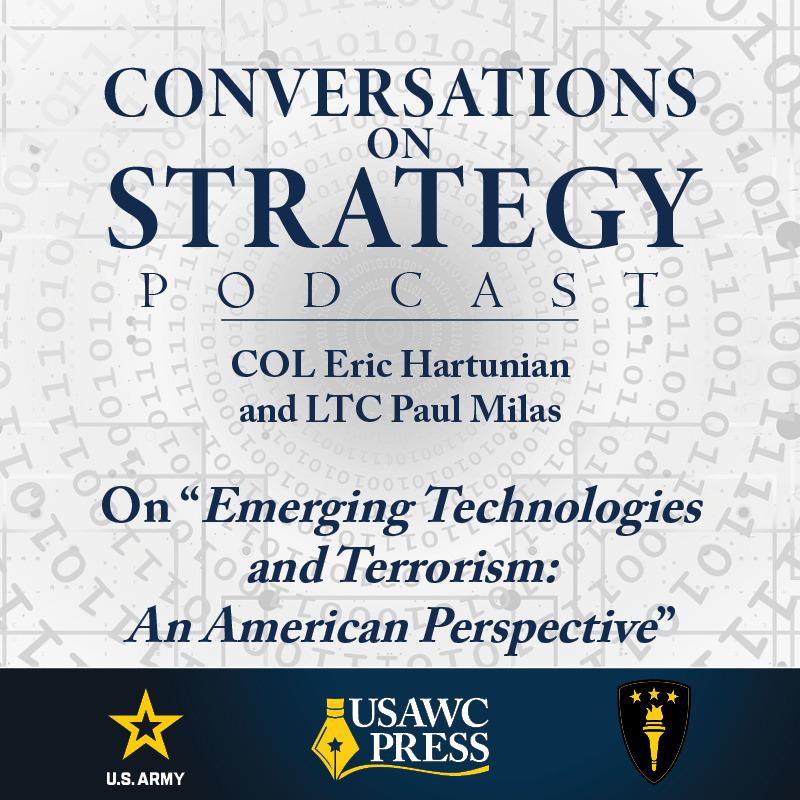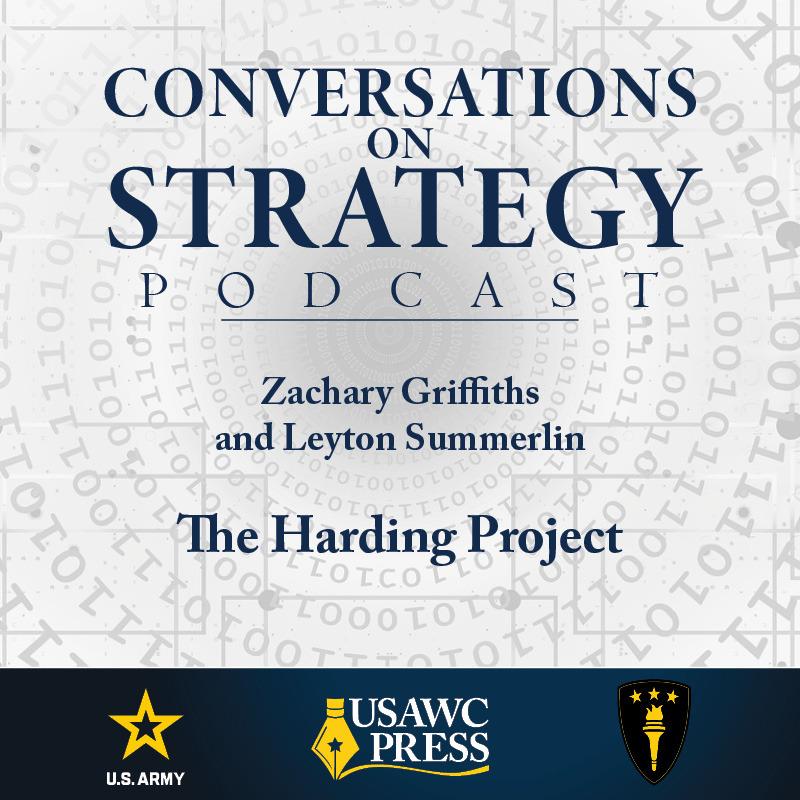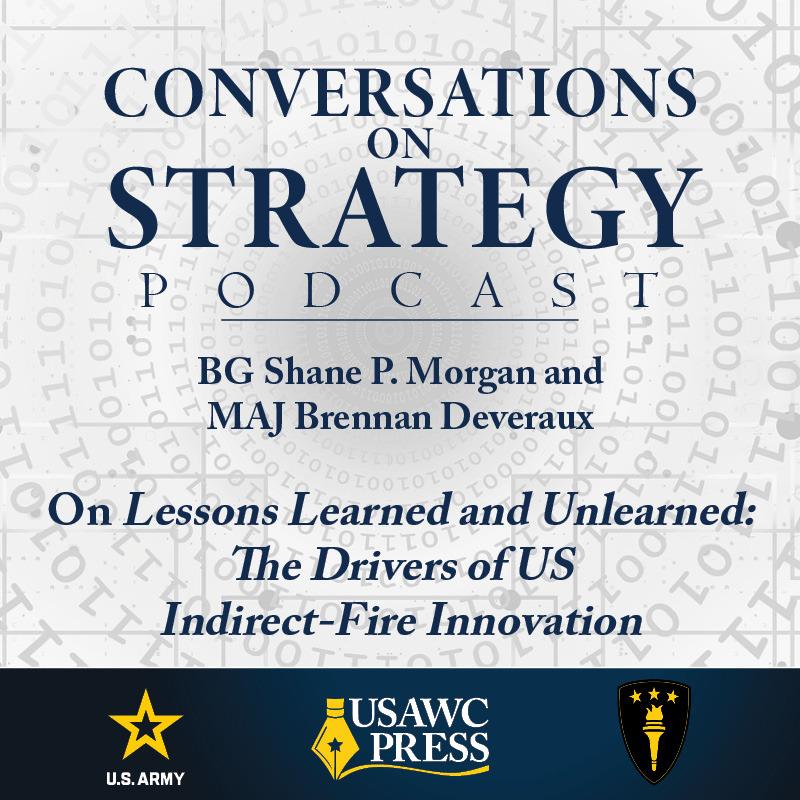Conversations on Strategy Podcast – Ep 59 – Mr. Patrick N. Kelleher and Brigadier General Ronnie D. Anderson Jr. – Logistics and Readiness
Description
In this episode of Conversations on Strategy, Mr. Patrick N. Kelleher and Brigadier General Ronnie D. Anderson Jr. discuss the importance of logistics and readiness. They recommend senior leaders shift their perspective on these topics to keep up with changes in the strategic environment and evolutions in technology. Kelleher and Anderson also discuss the role of resilience for modern logistics and new innovations and their effects on the force.
Keywords: logistics, readiness, strategic environment, senior leaders, resilience, modernization, commercial partners, technology, AI, alliances, sustainment
Stephanie Crider (Host)
You are listening to Conversations on Strategy. The views and opinions expressed in this podcast are those of the guests and are not necessarily those of the Department of the Army, the US Army War College, or any other agency of the US government.
I’m talking with Mr. Patrick N. Kelleher and Brigadier General Ronnie D. Anderson Jr. today.
Kelleher is the Deputy Assistant Secretary of Defense for Materiel Readiness, where he serves as the principal adviser to the Assistant Secretary of Defense Sustainment.
Among other notable achievements, he served 24 years on active duty in the Marine Corps.
Anderson is the director of the Contested Logistics Cross-Functional Team at US Army Futures Command. He previously commanded Joint Munitions Command.
Welcome to the show, gentlemen.
Brigadier General Ronnie D. Anderson Jr.
Good morning. Thanks for having us.
Mr. Patrick N. Kelleher
Good morning. Thank you.
Host
Let’s talk about logistics and readiness. Mr. Kelleher, you opened a recent LinkedIn post with the line “logistics is strategy.” Please explain what that means in the context of the current strategic environment.
Kelleher
The current strategic environment is obviously, you know, for those that follow it, very different than an environment in which we have operated for the last 25 or 30 years and more similar to the environment of World War II. And so, I think what that necessitates is the imperative to think about how we approach our strategy a little differently.
In the past, I think we had the latitude to design a strategy and then determine if it was logistically supportable, or simply turn to the logisticians and say, “This is what we’re going to do. Support it.”
I think now our strategy must be predicated on achievable logistics at its foundation. And so, where in the past, maybe, logisticians weren’t as involved as much as we probably should have been in developing a strategy. I think now, logistics should drive the strategy, and we should not even consider any strategic objectives or a campaign plan without first determining logistics feasibility, given the challenges in the environment—which, as I said, [are] very different [from] where many of us have fought in counterinsurgency operations for the last 25 or 30 years. So, at the macro level, that’s how I would describe it.
Host
General Anderson, how do you see that concept playing out on the ground or in Joint planning environments?
Anderson
Thanks.
First, I would say that I believe Mr. Kelleher’s premise, his post, and what he just laid out is absolutely correct, and it’s supported by what we’re seeing in our global military history happening right now. Many nations can project power. We’ve seen Russia in Syria. We see North Korea in Ukraine. China is starting to reach beyond its first island chain. But the United States is the only country on the planet that can project power anywhere on the globe in 12 to 72 hours and sustain that force indefinitely. That is our strategic advantage. But it can also be a strategic challenge, as Mr. Kelleher said.
So, every strategy has to be rooted in supportability. I also believe that that’s why contested logistics today is so important. Our adversaries know that our ability to project and sustain power on the globe is our strategic advantage, and they are rehearsing in the Pacific and across Europe to challenge our strategic advantage.
Host
Mr. Kelleher, you made a reference to World War II and needing to update how we view logistics. Are there any specific misconceptions that you think senior leaders still hold about the role of logistics?
Kelleher
I wouldn’t characterize them necessarily as misunderstandings or misperceptions. Many senior leaders in the Department of Defense, myself included, have served over, you know, the last two or three decades in an environment where we have not been contested, where we have been able to dominate in three domains. Now, we find ourselves challenged in five or six domains, depending on how you want to list out the domains.
And I think that that is a paradigm that, while people nominally acknowledge, you know, in the words that they say, I don’t think has necessarily been internalized because too many senior leaders have been conditioned, frankly, by logisticians, who have never failed, to have an expectation that logistics will not fail. But, because the environment has changed so dramatically, there may be a misperception [about] the fundamental logistics capabilities that we have and the degree to which we will be able to leverage them and the degree to which we have the capacity and capabilities writ large—the depth and resilience—that will be necessary to support the next fight, which are well beyond the depth and resilience that we needed for the last 20 or 30 years, because the environment is so profoundly different.
And I think that’s sort of the cognitive dissonance, if you will, that might exist. Although people talk about the importance of logistics, I’m not sure how much that has been truly internalized, as manifested by the investments that are being made into logistics to compensate for the logistics debt that we have incurred over the last 20 or 30 years.
I mean, I think the good thing is, as you look at where the spending curves are going over the next couple of years, the trend lines are good. They’re getting better. But it’s still, I would argue, not where we need to be to compensate for the deficiencies nor the shortfalls or the compromises, [and] the tradeoffs we have made with logistics capabilities over the last 20 or 30 years.
Host
Can logistics posture alone shape adversary decision making even before conflict begins?
Anderson
I got the pleasure of serving at the CENTCOM (US Central Command) headquarters when [General Kenneth F. McKenzie Jr.] was the commander there. It was entirely obvious how behaviors in the region changed based on posture. One of the things that I think about now, especially in the context of the Indo-Pacific, is what would happen if we either covertly or overtly deployed THAAD (Terminal High Altitude Area Defense), PrSM (Precision Strike Missile), long-range hypersonics and then just announced to the world, “Hey, look, we have this capability, and we’ve postured it forward?” Even for an exercise, right? And then we can make a strategic decision at that point to see whether it stays in position or if we bring it home and we just make a show of our ability to deploy something, get it there, demonstrate its potential, and then bring it home. It would be very important, and it would be a great lesson learned for us to observe the insights from our competitors’ behaviors when we do that.
It was completely obvious every time a carrier strike group arrived in the Persian Gulf how our adversaries changed their behaviors. When we demonstrate the ability to respond to a hurricane or a flood or an earthquake in the Middle East, our ability to sustain those things logistically and have boots on the ground in a very short order, it changed the behavior of those people competing and wanting to counter our influence in the region. And that happens in every part of the globe every time we demonstrate that capability.
Host
Turning to readiness, Mr. Kelleher, you’ve said logistics underwrites both readiness and resilience. How are we modernizing sustainment systems to keep pace with current threats?
Kelleher
Readiness equates to our ability to fight and win. Posture is a manifestation of our ability not just to deliver kinetic effects but to endure and continue to deliver kinetic effects. And so, posture is a manifestation of what I’ve written about—the logistics deterrent effect that General Anderson was just referencing. When our adversaries understand that we have the ability to endure, on top of our ability to deliver kinetic effects—to punch them in the face, and

